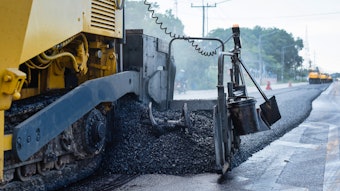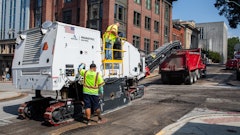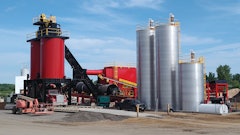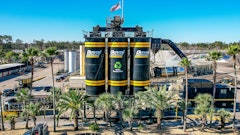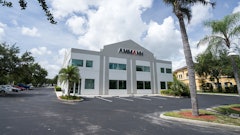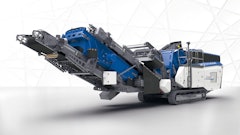SYRACUSE, NY - With the Federal Highway Administration supporting and promoting the use of recycled highway materials, the interest in reclaimed asphalt pavement (RAP) technology is growing. Jerry Collette worked on an asphalt recycling process for six years and finally arrived at the point where he required technical resources he did not possess. He turned to the NASA-funded Space Alliance Technology Outreach Program (SATOP) for help.
"It has been a long and costly road for us to walk to this point," Collette says. "Our resources were fully exhausted and we had no way to finish the design and certify the final engineering details until SATOP came along with an offer to help."
SATOP provides free assistance to small businesses with technical challenges through the expertise of the program's Alliance Partners, which consist of more than 30 aerospace companies, universities and national laboratories involved in the U.S. Space Program.
Collette's company, Asphalt Plant Technology 2000, in Carrolton, OH had developed the Rotary Thermal Recycling (RTR) System to recycle used asphalt road materials by indirectly heating reclaimed asphalt in an oxygen controlled atmosphere within a tightly sealed rotating drum. After four patents were obtained, the company performed empirical testing on the system for three years.
Based on those operational test results, Asphalt Plant Technology 2000 began the process of modifying and improving the system design. But first, they wanted to obtain design confirmation and verification of the science before locking up the final detailing for shop drawings.
Collette filed a Request for Technical Assistance with the SATOP center in Syracuse, N.Y. and was assigned to Dr. Yoav Peles, Associate Professor in the Department of Mechanical, Aerospace & Nuclear Engineering at Rensselaer Polytechnic Institute in Troy, NY. "Jerry and his team needed assistance to develop a thermal model to determine the amount and type of heat energy required to process a given volume of asphalt," Dr. Peles explained. "This would help them size the system for manufacturing."
Dr. Peles modeled the RTR System, analyzed the system performance and the material conditions, and simulated how a range of operating conditions would affect the asphalt and air exit conditions. He was then able to provide Asphalt Plant Technology 2000 with design confirmation for the RTR System. Collette has high praise for SATOP.
"We are very grateful for the excellent assistance from Rensselaer Polytechnic Institute and SATOP," Collette says. "They worked on our design confirmation and provided the engineering resources we did not have nor could afford in order to complete this innovative new recycling system and get it to market."
Collette hopes to launch the RTR System in 2011 and finally see the fruits of his six-year development program. Asphalt Plant Technology 2000 has several more development programs in process that are involved in new techniques for green energy recycling and recovery, which they hope to complete with the help of the funds earned from the RTR System project.
"We now have confirmed potential from an outside source and can move forward thanks to the help from SATOP," Collette says. "I'm sure this was everyday stuff to someone with Dr. Peles' abilities, but it was a lifesaving effort to us."


